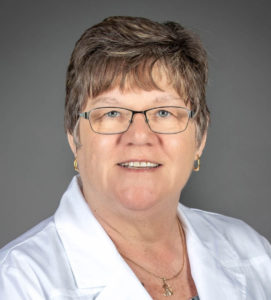Improve ED Throughput by Responding to Patient Flow

throughput (noun) : the intent of getting the patient to the provider quickly
Seems simple, right? After all, isn’t that why the patient came to the ED in the first place?
This should not be a problem, but it so often is! Let’s find out why.
Throughout my career, I have been in countless meetings discussing throughput issues in the emergency department. Without fail, everyone wants to point the finger and play the blame game…
“There are non-clinical people handling registration and deciding who should be seen.”
“The doctors are too slow.”
“The mid-levels are too slow.”
“Patients are held in the waiting room.”
“Triage is too long.”
“There are not enough beds in the back.”
The Problem
Every excuse is a symptom of the real problem: PROCESS
Emergency departments nationwide are currently struggling with throughput. But overcrowding and delays are typically connected to the process, not the people.
To achieve ideal efficiency in each department that was managed by Island Medical Management (IMM), we implemented a Process Improvement Team as we began operations within every new partner hospital. Utilizing the LEAN methodology, our team “mapped” the department from patient arrival to discharge or disposition. The team then prioritized areas in need of improvement and developed an action plan to expedite these changes.
We found the problem with the process of many EDs is the desire to practice “old” emergency medicine with the mentality that you take care of the sickest and send the others to the waiting room to wait their turn. They believe because the patient is in triage, it’s a good time to ask them all the questions to complete their paperwork. They keep a bed open “just in case.” And the use of hallway beds is an issue because, well, who would take care of them?
The Solution
The solution to problematic process requires teamwork.
In today’s healthcare environment, strong relationships within the caregiving team are essential to the success of any facility or department. Nurses, mid-levels, and physicians must be on the same page and remember that the patient is the focus.
The team needs to break down the department, looking for:
- Door to registration
- Door to triage
- Triage by ESI level
- Triage to bed
- Bed to provider
They need to take the emotion out of the process to look at it from the patient’s perspective.
Respond to Patient Flow
As part of ACEP best practices, I advocate that emergency departments should ‘pull until full,’ not attempting to control patient flow—but to respond to it. Similarly, triage should be viewed as a process, not a location within the emergency department. Operationalization requires robust teamwork between staff members in order to remove the triage bottleneck.
Constant forward-moving motion is critical; we must always be moving the patient towards the provider’s care. How can we do this as quickly as possible?
- Eliminate external waiting rooms
- Immediate bedding
- Quick and full triage at the bedside
- Quick and full registration at the bedside
Every ED must uphold a PhysicianFirst process for internal waiting rooms to maintain this forward-moving motion. Sending patients back to external waiting rooms should be avoided. Many sites have found success in creating a location in which less acute patients, ESI 4 or 5, are “vertical” in recliner chairs to be handled rapidly.
The challenges of change are difficult. But when everyone participates in the process and is willing to act in the best interest of the patient, it proves to be a very rewarding experience.
Discover more ways to improve ED metrics
Article originally written by Beth Wiley, BS, RN
